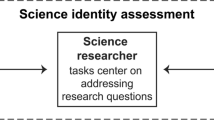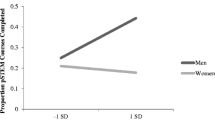Abstract
Black males, as one non-dominant population, remain underrepresented and less successful in science, technology, engineering, and mathematics (STEM). Researchers focused on non-dominant populations are advised against generalizations and to examine cultural intersections (i.e. race, ethnicity, gender, and more) and also to explore cases of success, in addition to cases of under-achievement and underrepresentation. This study has focused on one African American male, Randy, who expressed high-achieving STEM career goals in computer science and engineering. Furthermore, recognizing that culture and identity development underlie STEM engagement and persistence, this long-term case study focused on how Randy developed a STEM identity during the course of the study and the implications of that process for his STEM career exploration. Étienne Wenger’s (1999) communities-of-practice (CoP) was employed as a theoretical framework and, in doing so, (1) the informal STEM program in which Randy participated was characterized as a STEM-for-social-justice CoP and (2) Randy participated in ways that consistently utilized an “economics” lens from beyond the boundaries of the CoP. In doing so, Randy functioned as a broker within the CoP and developed a non-traditional STEM identity-in-practice which integrated STEM, “economics”, and community engagement. Randy’s STEM identity-in-practice is discussed in terms of the contextual factors that support scientific identity development (Hazari et al. in J Res Sci Teach 47:978–1003, 2010), the importance of recognizing and supporting the development of holistic and non-traditional STEM identities, especially for diverse populations in STEM, and the implications of this new understanding of Randy’s STEM identity for his long-term STEM career exploration.
Similar content being viewed by others
References
Banner, I. (2016). Valuing difference in students’ culture and experience in school science lessons. Cultural Studies of Science Education, 11(4), 1071–1079. doi:10.1007/s11422-016-9729-5.
Barton, A. C., & Yang, K. (2000). The culture of power and science education: Learning from Miguel. Journal of Research in Science Teaching, 37(8), 871–889. doi:10.1002/1098-2736(200010)37:8<871:aid-tea7>3.0.co;2-9.
Brandt, C. B. (2008). Discursive geographies in science: Space, identity, and scientific discourse among indigenous women in higher education. Cultural Studies of Science Education, 3(3), 703–730. doi:10.1007/s11422-007-9075-8.
Brickhouse, N., Lowery, P., & Schultz, K. (2000). What kind of a girl does science? The construction of school science identities. Journal of Research in Science Teaching, 37(5), 441–458. doi:10.1002/(SICI)1098-2736(200005)37:5<441:AID-TEA4>3.0.CO;2-3.
Brown, B. A. (2004). Discursive identity: Assimilation into the culture of science and its implications for minority students. Journal of Research in Science Teaching, 41(8), 810–834. doi:10.1002/tea.20228.
Cammarota, J., & Fine, M. (2008). Youth participatory action research: A pedagogy for transformational resistance. In J. Cammarota & M. Fine (Eds.), Revolutionizing education: Youth participatory action research in motion (pp. 1–11). New York: Routledge.
Carlone, H., & Johnson, A. (2007). Understanding the science experiences of successful women of color: Science identity as an analytic lens. Journal of Research in Science Teaching, 44(8), 1187–1218. doi:10.1002/tea.20237.
Cech, E. A., & Waidzunas, T. J. (2011). Navigating the heteronormativity of engineering: The experiences of lesbian, gay, and bisexual students. Engineering Studies, 3(1), 1–24. doi:10.1080/19378629.2010.545065.
Du Bois, W. E. B. (2006). The souls of black folk. State College: The Pennsylvania State University.
Emdin, C. (2011). Droppin’ science and dropping science: African American males and urban science education. Journal of African American Males in Education, 2(1), 66–80.
Hazari, Z., Sonnert, G., Sadler, P. M., & Shanahan, M.-C. (2010). Connecting high school physics experiences, outcome expectations, physics identity, and physics career choice: A gender study. Journal of Research in Science Teaching, 47(8), 978–1003. doi:10.1002/tea.20363.
Hrabowski III, FA. (2014). How to get more black men into science. Chronicle of Higher Education. 61(9), B22–B23. Retrieved from http://search.ebscohost.com/login.aspx?direct=true&db=eft&AN=99106663&site=ehost-live.
Johnson, C. C., Peters-Burton, E. E., & Moore, T. J. (2015). STEM road map: A framework for integrated STEM education. Abingdon: Routledge.
Lent, R., Brown, S., Sheu, H.-B., Schmidt, J., Brenner, B., Gloster, C., et al. (2005). Social cognitive predictors of academic interests and goals in engineering: Utility for women and students at historically black universities. Journal of Counseling Psychology, 52(1), 84–92. doi:10.1037/0022-0167.52.1.84.
Malone, K. R., & Barabino, G. (2009). Narrations of race in STEM research settings: Identity formation and its discontents. Science Education, 93(3), 485–510. doi:10.1002/sce.20307.
McGee, E., & Pearman, F. A., II. (2015). Understanding black male mathematics high achievers from the inside out: Internal risk and protective factors in high school. The Urban Review, 47, 513–540. doi:10.1007/s11256-014-0317-2.
Nasir, N. S., & Shah, N. (2011). On defense: African American males making sense of racialized narratives in mathematics education. Journal of African American Males in Education, 2(1), 24–45.
National Science Board. (2016). Science and engineering indicators 2016. Arlington: National Science Foundation (NSB-2016-1).
President’s Council of Advisors on Science and Technology (PCAST). (2010). Prepare and inspire: K-12 education in science, technology, engineering, and mathematics (STEM) for America’s future. Washington, D.C.: Executive Office of the President.
Rascoe, B., & Atwater, M. (2005). Black males’ self-perceptions of academic ability and gifted potential in advanced science classes. Journal of Research in Science Teaching, 42(8), 888–911. doi:10.1002/tea.20077.
Riegle-Crumb, C. (2006). The path through math: Course sequences and academic performance at the intersection of race-ethnicity and gender. American Journal of Education, 113(1), 101–122. doi:10.1086/506495.
Riegle-Crumb, C., & King, B. (2010). Questioning a white male advantage in STEM: Examining disparities in college major by gender and race/ethnicity. Educational Researcher, 39(9), 656–664. doi:10.3102/0013189x10391657.
Shaffer, D. (2004). Pedagogical praxis: The professions as models for post-industrial education. Teachers College Record, 106(7), 1401–1421. doi:10.1111/j.1467-9620.2004.00383.x.
Tan, E., Barton, A. C., Kang, H., & O’Neill, T. (2013). Desiring a career in STEM-related fields: How middle school girls articulate and negotiate identities-in-practice in science. Journal of Research in Science Teaching, 50(10), 1143–1179. doi:10.1002/tea.21123.
Valla, J. M., & Williams, W. M. (2012). Increasing achievement and higher-education representation of under-represented groups in science, technology, engineering, and mathematics fields: A review of current K-12 intervention programs. Journal of Women and Minorities in Science and Engineering, 18(1), 21–53. doi:10.1615/JWomenMinorScienEng.2012002908.
Wenger, E. (1999). Communities of practice: Learning, meaning, and identity. Cambridge: Cambridge University Press.
Acknowledgements
The author thanks Randy for his understanding and willing participation in this research study, as well as advisers, faculty and staff from Boston College. The author also thanks Dr. Flavia Rezende, Dr. Katemari Rosa, and Dr. Michèle Foster for their help in revising earlier drafts of this work. This work was supported, in part, through grants awarded to Dr. Mike Barnett, specifically National Science Foundation Information Technology Experiences for Students and Teachers (ITEST) program (Grants #0525040 and #0833624) and a Hewlett Packard Foundation Teaching with Technology Program (Grant #189660). This work was also supported by funding awarded to the YPAR program from the Peter J. Sharp Foundation and the Lynch School of Education at Boston College. The author, however, acknowledges no conflicts of interest in conducting this study and its publication.
Author information
Authors and Affiliations
Corresponding author
Additional information
Lead Editor: Flavia Rezende
Rights and permissions
About this article
Cite this article
Mark, S.L. A bit of both science and economics: a non-traditional STEM identity narrative. Cult Stud of Sci Educ 13, 983–1003 (2018). https://doi.org/10.1007/s11422-017-9832-2
Received:
Accepted:
Published:
Issue Date:
DOI: https://doi.org/10.1007/s11422-017-9832-2




